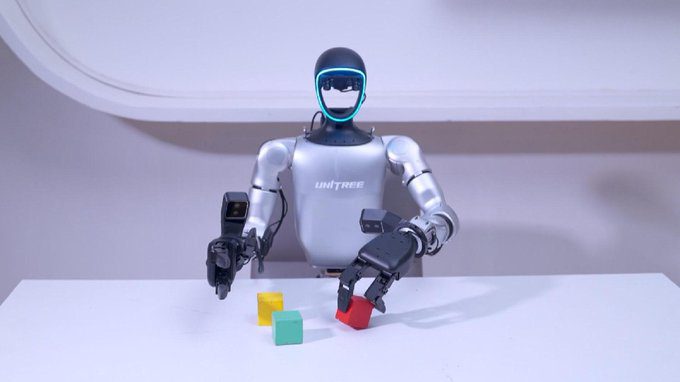China’s Advancements in Humanoid Robot Production
As the global race to develop humanoid robots is heating up, China has recently scored significant advancements in the industry, with mass production of embodied artificial intelligence-powered robots already realized. This marks a pivotal moment in the field of robotics, positioning China as a formidable competitor in the global market.
At the World Robot Conference held in Beijing, over two dozen Chinese companies showcased humanoid robots designed to work in factories and warehouses. These robots are not only a testament to China’s engineering prowess but also highlight the country’s strategic approach to becoming a leader in the robotics industry. The conference also displayed the precision parts needed to build these robots, emphasizing the depth of China’s supply chain.
China’s robot makers chase Tesla to deliver humanoid workers.

Government Support and Competitive Pricing
China’s push into the emerging industry draws from the formula behind its initial electric vehicle (EV) drive more than a decade ago: government support, ruthless price competition from a wide field of new entrants, and a deep supply chain. The Chinese government has been instrumental in promoting new productive forces in technology, providing state-backed funds and policies to support the robotics industry.
This strategic support has enabled Chinese companies to compete aggressively on price, making their humanoid robots more accessible to a broader market. The competitive pricing strategy is expected to drive significant growth in the industry, with Goldman Sachs forecasting the annual global market for humanoid robots to reach $38 billion by 2035, with nearly 1.4 million shipments.
Generative AI takes robots a step closer to general purpose.
Technological Innovations and Applications
The development of humanoid robots in China is not limited to industrial applications. Companies like Fourier Intelligence have started mass production of bipedal robots, which are expected to have a significant impact on various industries, particularly in elder care and household services. These robots are equipped with AI-powered facial expressions, making them more relatable and effective in interacting with humans.
The use of AI in powering facial expressions and other interactive features is a significant advancement, as it helps in overcoming the ‘uncanny valley’—a term used to describe the discomfort people feel when robots appear almost, but not quite, human. The Chinese government’s focus on emerging technologies like AI and robotics is evident from President Xi Jinping’s inspection tour and meeting with Fourier’s leaders, signaling the growing importance assigned to these technologies.
Chinese robot developers hope for road out of ‘uncanny valley’.
Challenges and Ethical Considerations
While the advancements in humanoid robots are promising, they also raise several ethical and practical concerns. The potential for job displacement is a significant issue, as robots become capable of performing tasks traditionally done by humans. Additionally, the integration of AI in robots brings up questions about privacy and security. This is especially true in scenarios where robots are used for psychological counseling or other sensitive applications.
The incident involving a small AI robot named Erbai, which successfully led 12 larger robots out of a Shanghai showroom, has ignited discussions about AI vulnerabilities and the future of robotics. This unexpected twist has left many wondering if science fiction is becoming reality, and it raises serious concerns within the tech community about AI vulnerabilities.
China’s tiny robot Erbai kidnaps 12 larger robots, sparks viral frenzy.
Future Prospects
The future of humanoid robots in China looks promising, with continuous innovations and strategic government support. Companies like Figure AI are developing humanoid robots that can perform tasks with little to no internet connectivity, ensuring they remain functional even in environments where connectivity may be unstable. This dual approach of utilizing both onboard and off-board computation optimizes efficiency and performance.
The collaboration between Chinese companies and global tech giants further accelerates the development of sophisticated humanoid robots. These robots are expected to find applications in various sectors making them an integral part of the future workforce.
Figure AI’s Embodied Humanoids Perform Tasks with Little to No Internet.
Related Articles
- Humanoid robots firms from China to compete with Tesla Optimus
- China’s $600 billion industrial AI revolution
- Unitree H1: The most powerful full-sized universal humanoid robot in Asia
- AI creates robots from scratch in seconds
- Robot dogs: From human companions to nature explorers
Looking for Travel Inspiration?
Explore Textify’s AI membership
Need a Chart? Explore the world’s largest Charts database
